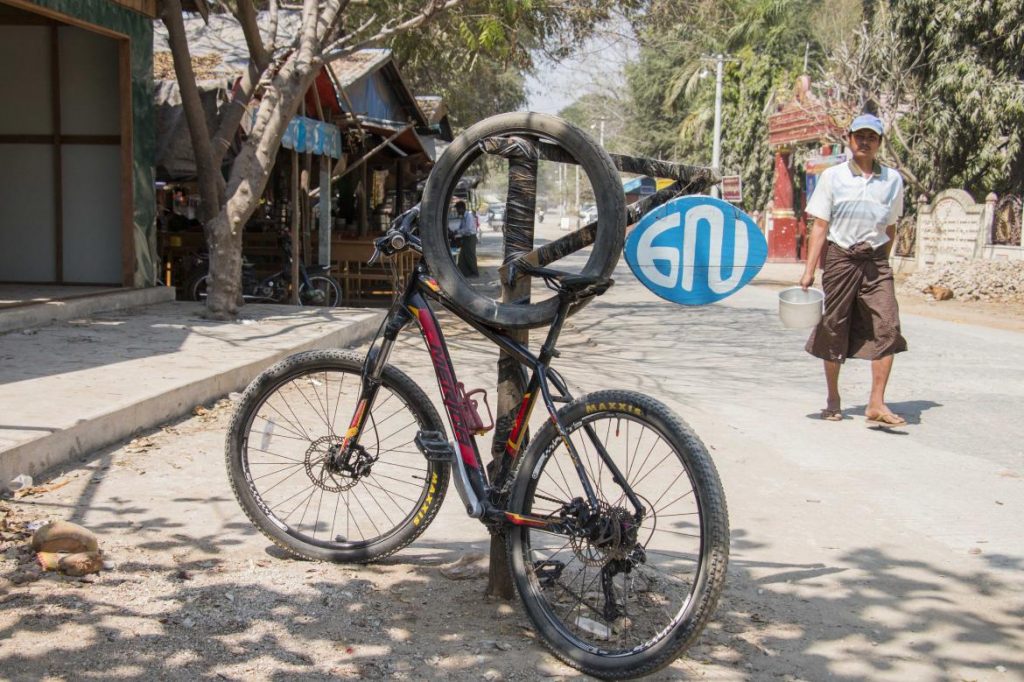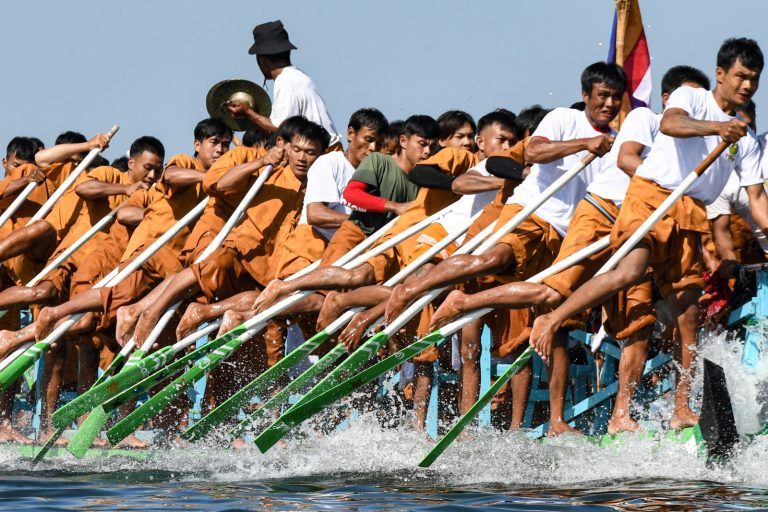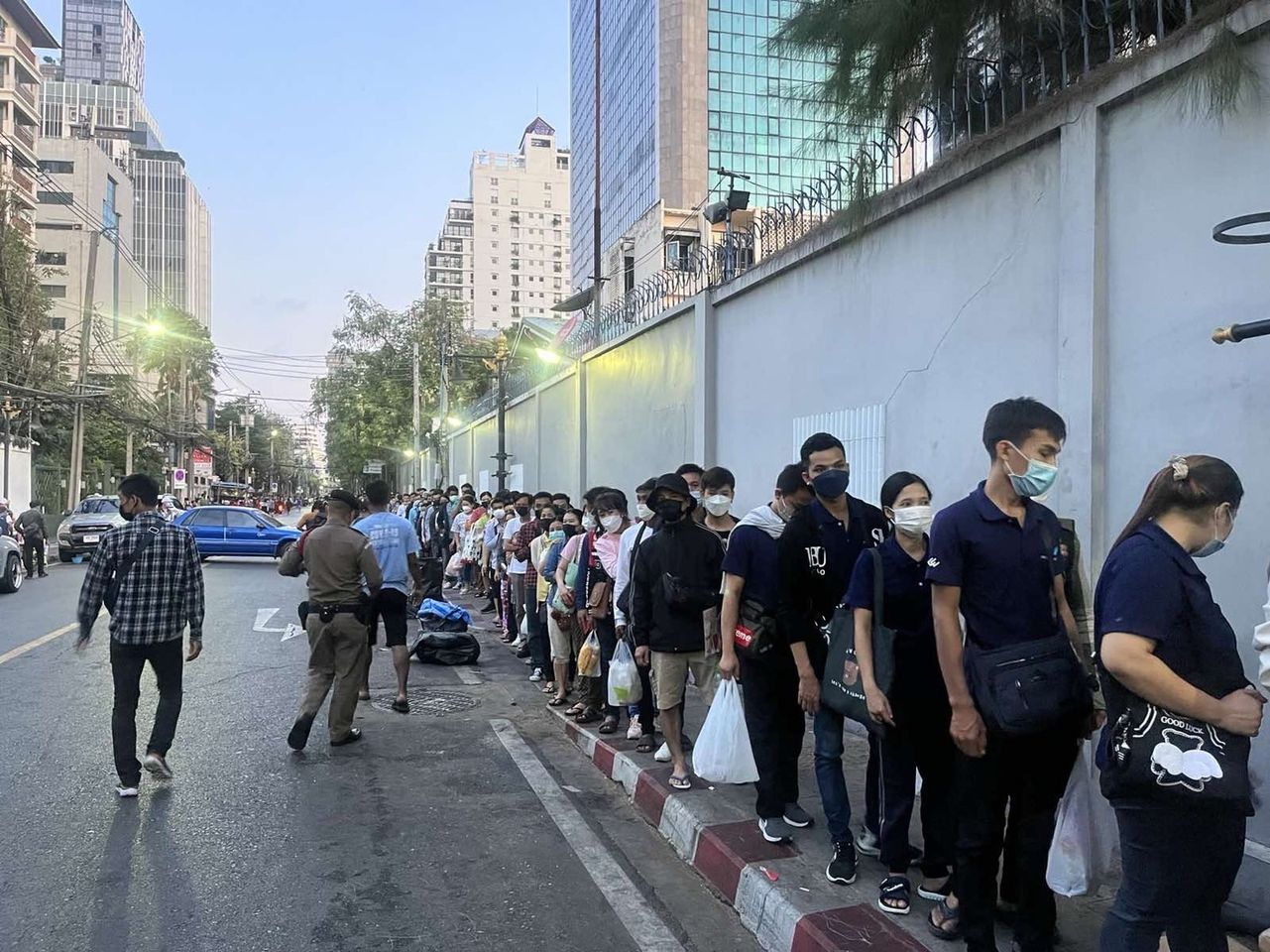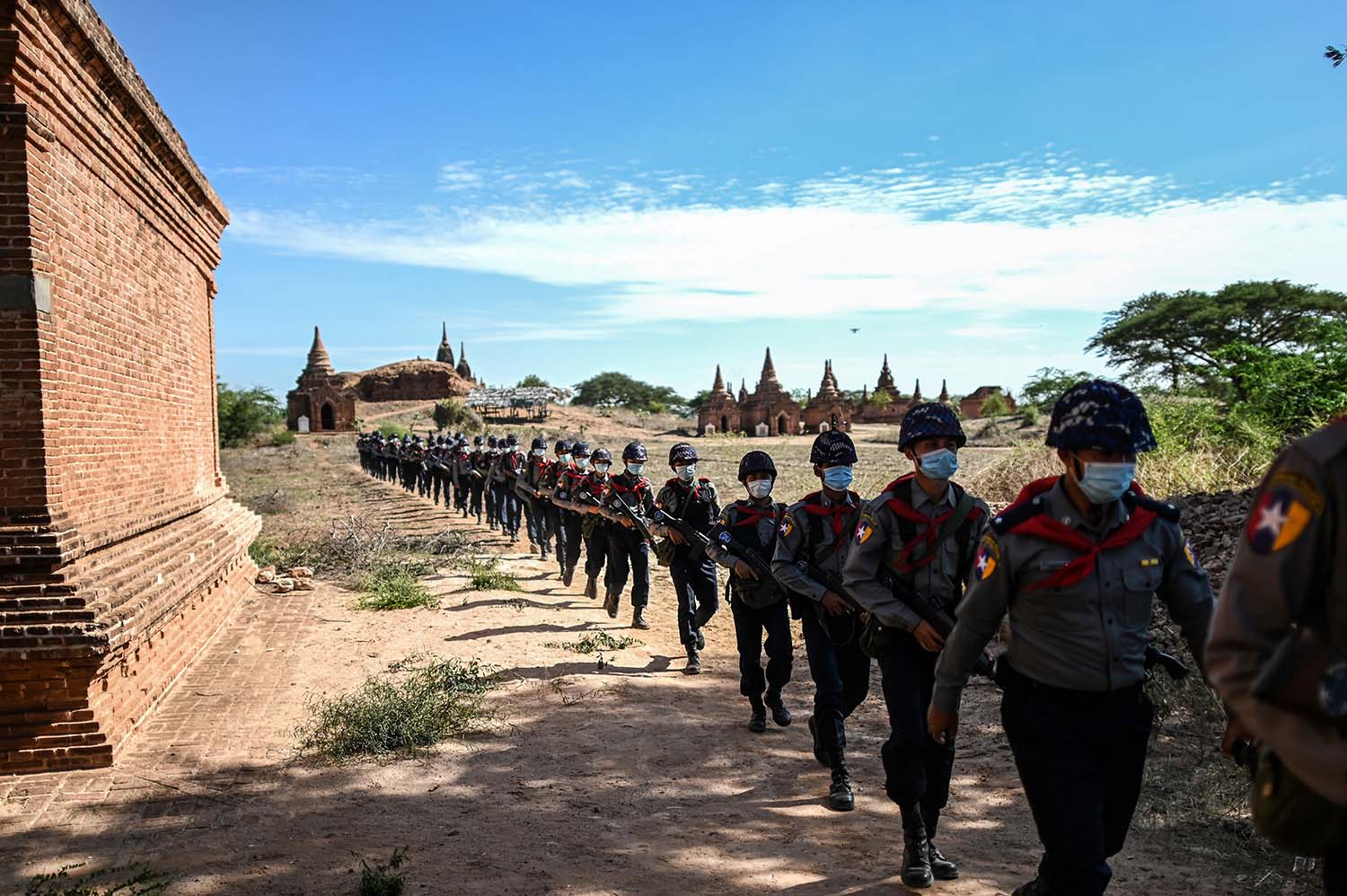By bike or on foot, bouncing on a train or gliding on a river, the Frontier team give their recommendations for journeys and hidden destinations across the country.
Yangon-Mandalay (motorbike)
As motorcycles are forbidden on the Yangon-Mandalay Expressway, one wishing to ride between the two cities will find themselves relegated to the shady lanes and quiet villages of the old highway.
Just east of, and running roughly parallel to, the expressway, the old route passes through Meiktila, whose harbour bears a colossal, golden hinthar duck, and Taungoo, home of the conquering King Bayinnaung. But the road’s real charm lies in the local markets, gardens, marketplaces, monasteries and other quiet, hidden treasures that these days are totally bypassed by the big private busses.
The road is in generally good condition with plenty of restaurants and mechanic shops along the way. On the other hand, it is often only two lanes wide and populated by freight lorries (which, too, have been banished from the new expressway). Fortunately, traffic usually moves at a relatively leisurely 80 kilometres per hour on the open road and 50kph through towns.
If travelling by motorbike, it’s best to take two days and spend a night in Nay Pyi Taw. The trip is the perfect, leisurely tour of the country’s heartland. – Jared Downing
Yangon-Bagan (train)
Train travel in Myanmar is typically approached with trepidation. Will the train leave on time – or at all? How will I fend off pickpockets if I’m asleep? Will I be seated next to a person transporting livestock?
Support more independent journalism like this. Sign up to be a Frontier member.
Those taking a sleeper on the Yangon-Bagan express need not worry. I’d been meaning to give it a shot for years, but the recent visit of a relative finally gave me the push I needed. I was pleasantly surprised. If you’ve got the time and the inclination, the train is an excellent option.
The four-person sleeper carriages are comfortable and relatively clean, even featuring a private toilet (admittedly less clean). The tickets are reasonably priced at around K15,000 each, and can be bought in advance from the ticket office on Bogyoke Aung San Road (be sure to take your passport or Myanmar identity card). The fare is roughly equivalent to the bus, which is a bit faster but much less charming, and barely a tenth the cost of an air ticket. The service departs from Yangon Central, which saves a trip out to the airport or, worse still, Aung Mingalar bus terminal.
Perhaps the biggest attraction is the timing. The train leaves at 4pm from Yangon, so you catch a few hours of the city fringes and countryside before darkness sets in. When you’ve had enough of your book, you fold up the seats into a bed. All going to plan, you’ll wake up in Magway Region, slowly trundling through the dry zone.
Of course, the journey is a bit bumpy and the carriages often collide into each other with a loud bang. Some of the adults in our crew had a restless night, but the two-year-old was soon rocked into a peaceful, 10-hour slumber. Some things just can’t be bought. – Thomas Kean
Loikaw to Thandaunggyi (motorbike)
The 220-kilometre (136-mile) journey from the Kayah State capital Loikaw to the former colonial hill station of Thandaunggyi in Kayin State is an ambitious day trip – by car. Tackle it by motorbike and you’ll want an early start, an over-supply of petrol and a resilient derriere.
Starting before sunrise, the first hour or so is a relatively straightforward jaunt south towards Demoso, where an engine check and a hearty breakfast of noodles and sweet tea is well advised; there are not many options for food or petrol stops for the rest of the journey. Demoso sits at the top of a loop: the clockwise journey runs through the heart of Kayah State, before looping back towards Taungoo and Thandaunggyi; the anti-clockwise journey passes through Kayah, Shan and Kayin states (with a brief jaunt in Bago Region before looping back to Kayin).
The anti-clockwise option is the more sensible, but only by a thin margin.
The scenery is impressive almost as soon as you leave Demoso, but the road is less so. It’s only about 60 kilometres to the next stop – a village named Heshsuku, which marks the border between Kayah and Shan borders – but the journey takes several hours.
The road quality improves somewhat in Shan and Kayin states, but the winding journey does not make progress any faster. On the bright side, you’ll hardly encounter any other traffic and the scenery is dramatic, making it one of the most enjoyable stretches to travel anywhere in the country. There are a few welcome breaks along the way, the first being the Kayan National Mausoleum, which was erected for fallen soldiers from the Kayan New Land Party, an ethnic armed group that signed a ceasefire with the government in 1994. The other is at Yado, where the crumbling Sacred Heart Church brings a welcome opportunity to take a break from the bike.
The rest of the journey is about focusing on the road and pushing hard towards Thandaunggyi. The road cuts back and forth for several hours, before opening up just south of Kalekho Atet. If the journey is timed to perfection, you’ll reach the junction of the Taungoo-Thandaunggyi road around dusk. From there, it’s a hard push up the hill to reach Thandaunggyi for sunset. – Oliver Slow
Mandalay to Bagan (boat)
The concrete road to (or indeed from) Mandalay is not particularly enticing, choked as it is with cloud-pluming trucks, crazed drivers and roaming livestock.
If time is not of the essence, a more enjoyable way to make the journey is along the mighty Ayeyarwady River (the real “road” immortalised in Kipling’s poem). The trip south from Mandalay to Bagan takes between two and four days, depending on the schedule.
My journey on the Ananda Cruise Ship began with a brief detour north to Mingun. The village is of historical significance, renowned for its monumental and unfinished stupa from the 18th century and the Mingun Bell, one of the world’s largest.
From Mingun, the boat meanders south, passing the former royal capital Amarapura to the east and the pagoda-studded hills of Sagaing to the west. Both places are popular stops for the many luxury vessels that ply the Ayeyarwady.
These cruises are of course as much about enjoying the services onboard the boat – think spas, swimming pools, deck chairs and cocktails. But an enjoyable few hours can be spent relaxing on the balcony – there’s no harm doing it cocktail in-hand, of course – just watching life unfold on and beside the river. – Oliver Slow
Southern Rakhine coast (car or motorbike)
While Ngapali and Mrauk-U get most of the attention in Rakhine, the far south of the state has gone somewhat unnoticed by tourists.
Boasting palm-fringed, deserted beaches backed by rugged, forested mountains, interesting wildlife, enticing rivers and traditional villages, it genuinely has something for everyone.
Except, that is, hotels. For now tradition holds sway. No more so than in Zikhone, a sleepy village that sits in a time capsule. Named because of the plums that grow in the area, it also happens to be the location of one of the most beautiful beaches you will find in Myanmar.
Wandering the tangle of dusty lanes that make up tiny Zikhone, seven hours by road from Yangon, is a joy in itself. White fluffs of kapok drift on the sea breeze, villagers collect herbs, flowers, coconuts and wood, while crimson chillies, cashew nuts and puffer fish are left to dry in the baking sun.
It’s a place where carefree children play between palm trees and the cows and buffalo simply seek shade under giant green banana leaves.
It’s tranquillity in a coconut shell.
If Zikhone is a plum location then its neighbour – reached by wading through a small river – is an absolute peach. Named “Moonrock Beach” by locals because of the grey lunar rockscape you pass on the way, it is backed by nothing but a series of camel-humped hills.
Ten minutes north from Zikhone on a motorbike is the impossibly beautiful Laung Gyo Beach. Next stop is Kanthayar, which has somehow managed to find its way into two previous editions of the Lonely Planet guidebook to Myanmar, largely because it has a smattering of very average accommodation.
Further north is Satthwa, which makes for a shady stopover, before you reach the nearby pretty bay at Maw Shwe Chaing. Another hour north there are protected mangroves and a turtle sanctuary at Kyeintali. Keep going and you eventually hit Ngapali.
Heading south from Zikhone is Gwa, a functional riverside town with a decent beach. But across the river, by boat for now until a bridge is built by the end of the decade, lies an endless string of delicious golden bays all the way down to the border with Ayeyarwady Region. And the picturesque Gwa river, which gouges its way through the Rakhine mountains, is an adventurers dream just waiting to be navigated. – Martyn Brown
Dawei Peninsula (motorbike)
A boy grins and raises his arms aloft in celebration as another goal is scored while his friends jostle and scramble to gather the ball. Sporting well-worn and familiar football shirts they enthusiastically kick off to start the game again.
It’s an everyday scene familiar to playgrounds around the world over. Except this is no playground, it is the scorching sand of a rough and tumble fishing village on Myanmar’s remote southern tropical coast.
The thirsty gaggle – Chelsea, Man City and Everton among others – relieve me of my water bottle, guzzling it down before hurling it onto the beach. It doesn’t matter. This is the village rubbish tip, toilet, and football pitch. Welcome to San Hlan.
San Hlan makes an interesting stop off point on the Dawei Peninsula, a bewitching finger of land pointing directly south into the Andaman Sea. Closer to Bangkok than Yangon, it’s a world of stunning scenery with jagged mountains, fishing villages, waterfalls and gloriously untouched beaches.
The local capital, Dawei, is just one hour from Yangon by plane and the starting point for exploring the peninsula. Hiring a motorbike is de rigueur but it can be done by car or more slowly by bus.
The main road out of town takes you over the Dawei River before meandering its way down the spine of the peninsula, passing through villages, rice paddies, cashew and palm plantations.
The end of the road, literally, is Paradise, a near-perfect beach with simple accommodation and reached only via a jungle track.
Without doubt the most jaw-dropping strip of sand in the region is Po Po Kyauk or Grandfather Beach, a one-hour ride north of Paradise. Named after a nearby mountain it is Myanmar’s version of Whitehaven Beach in northern Australia.
Paradise and Grandfather aside, there are dozens more beaches to discover from the tip of the peninsula all the way up to the well known Maungmagan Beach and the endless golden sands of Nabule, the planned site of the controversial Dawei Special Economic Zone. – Martyn Brown
Waterfall hunting, Mandalay (car and foot)
Want to know a secret? It’s my favourite place to relax, but few people know about it – at least yet. You have to drive from Mandalay along the highway towards Lashio for about 30 minutes and then take a turn off left near the village of Htone Bo. Drive another 30 minutes, skirting along the edge of the limestone mountains, and you’ll come to a waterfall.
Most locals already know this place as thone htat yetagun, or “three-level waterfall”. But in early 2016, some hikers from Mandalay used Google Maps to discover an even larger waterfall, shi htat yetagun (“eight-level waterfall”), further up the mountain. They named it “paradise” and have kept it a secret. This might seem greedy, but they’ve seen what happens when a place is “discovered” – it gets overrun by visitors, who leave large amounts of rubbish. This is their paradise, and they are very protective of it.
In truth, most people would struggle to reach it. The walk is not long – about 30 minutes – but it’s technically challenging, with steep slopes and giant rocks that you need to clamber over. Without some bouldering experience, you’ll find it very difficult.
You hear the roaring of the waterfall before you see its fresh, clean and very blue water. Turn around, and you can enjoy views over the Mandalay plain and the Ayeyarwady River. The water is shockingly cold, but perfect for the hot summer months. – Nyein Su Wai Kyaw Soe
Mandalay to Mingun (bicycle)
It’s 7am, and my partner and I are at a bike rental shop named “Phoe Swin”, on 37th Street between 77th and 78th streets. From here we head south on our rental bikes (K10,000 a day, including helmet) towards Kandawgyi Lake and then along the bank of the Ayeyarwady River. We cross the bridge into Sagaing Region and cut north through the Sagaing hills, which are a hive of monasteries and pagodas – some of them very ancient.
The route is perfect for bikes – not too bumpy, and with small but regular hills. There are about half-a-dozen small villages along the way to Mingun. One named Kho Taung is famous for its mont ti, a salad dish of thick rice noodles with fish balls. The entire village is full of mont ti stalls and we eat our breakfast there.
After 23 kilometres and about 2.5 hours we arrive in Mingun. Famous for its half-built pagoda and giant bell, the surrounding area is also full of fabric shops, art galleries and souvenir stalls. After exploring for a while, we decide against riding back and instead take the boat, which docks just below Pahtodawgyi Pagoda. After a 45-minute ride, we’re back in Mandalay and it’s just a short ride across town to Phoe Swin, past the Zaycho Market and Royal Palace. – Nyein Su Wai Kyaw Soe
This article was first featured in the Discover Myanmar special edition of Frontier, published in October 2017. TOP PHOTO: Nyein Su Wai Kyaw Soe | Frontier







